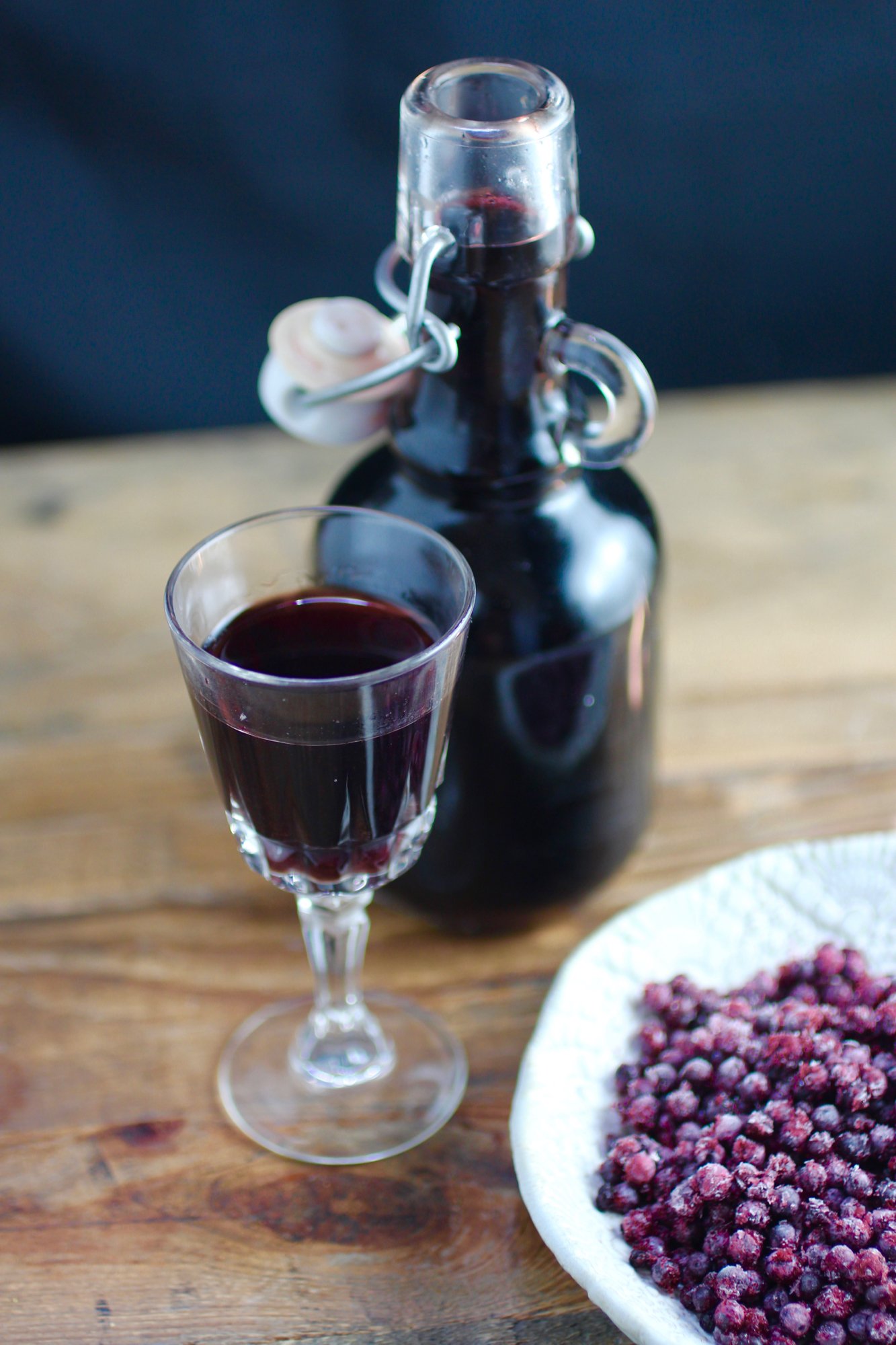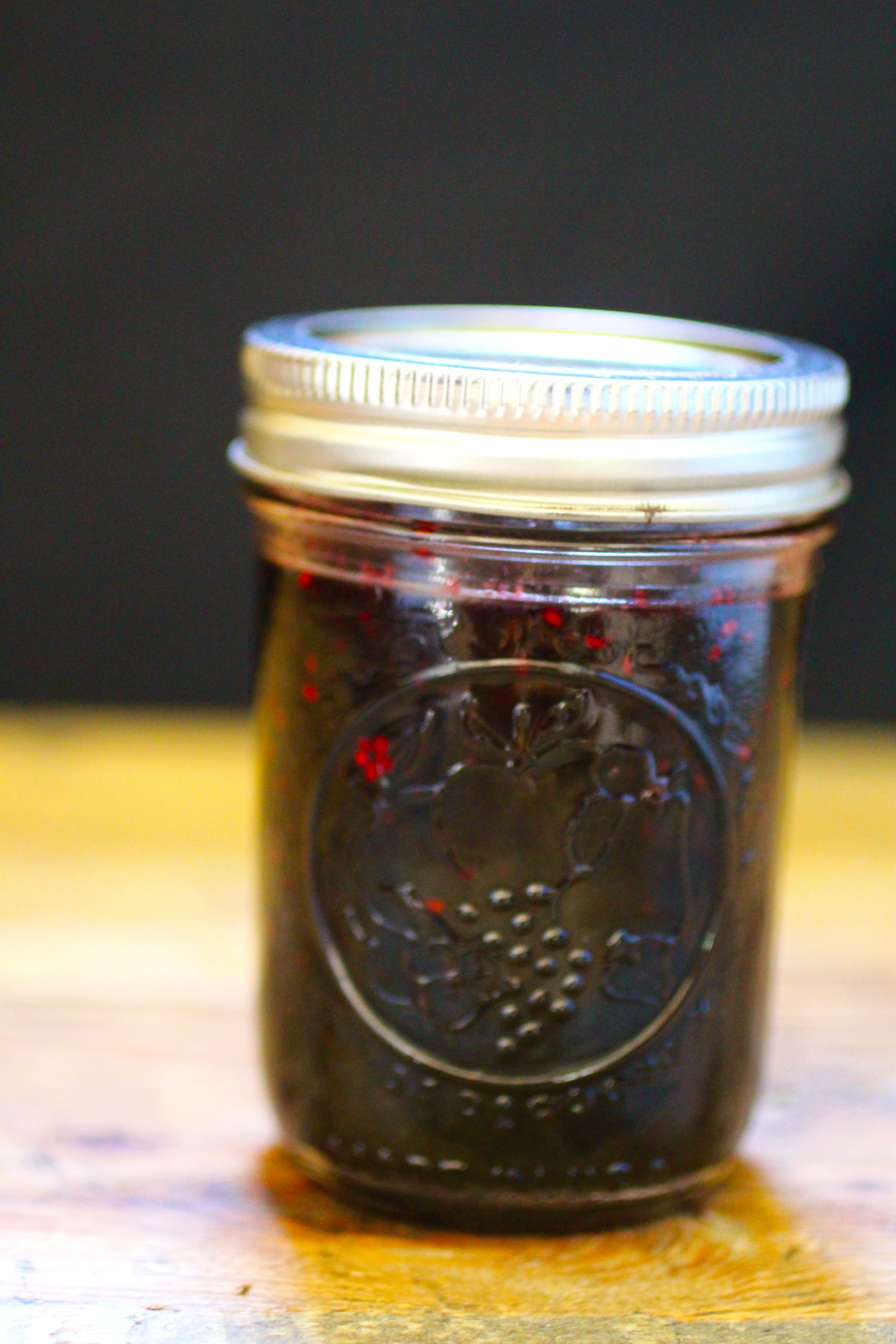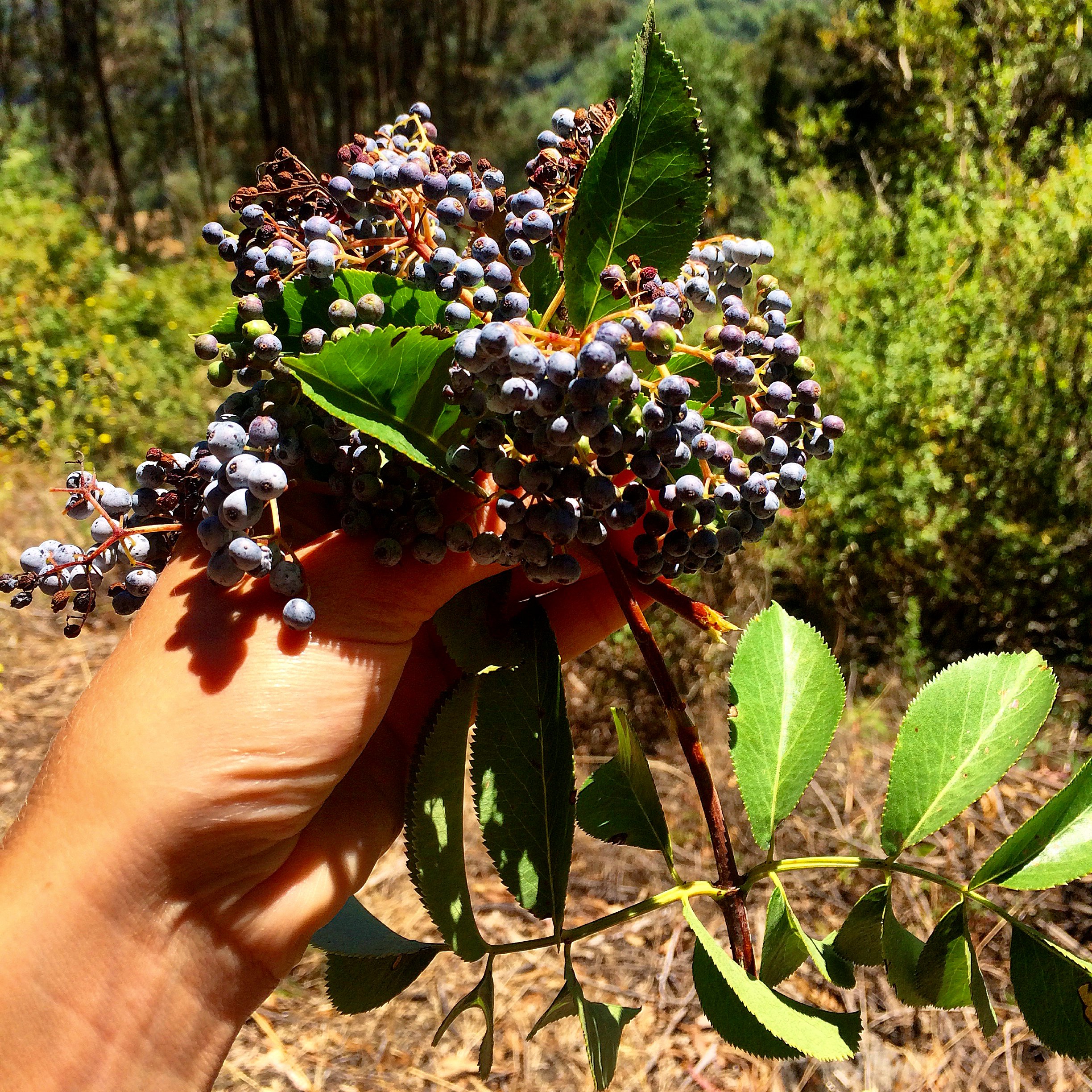Spiced elderberry cordial
Unlike elderflower cordial, elderberry cordial is a stronger, thicker syrup containing alcohol that is used in both medicinal and culinary applications. The syrup is sometimes taken regularly for cold and flu prevention (there is limited peer-reviewed, but much anecdotal evidence suggesting the berries enhance immune response), to top pancakes, or, as I particularly enjoy, with champagne for an “elderberry kir royale”. Feel free to experiment with the spice blend, add other ingredients such as citrus peel and herbs, or keep it simple with just the berries.
1 1/4 cups dried elderberries or 2 cups fresh
1 cinnamon stick, crushed
1 star anise
About 3 cups brandy
Honey, to taste (maple syrup or other sweetener can be substituted for honey)
Place elderberries, cinnamon, and star anise into a clean quart-sized glass jar. Add brandy to fill the jar and cover with a lid. Label the jar with contents and the date. Set aside in a cool, dark place for 3 to 4 weeks.
Strain cordial through cheesecloth over a large bowl. Squeeze contents of cheesecloth to release remaining liquid into the bowl then discard solids.
Add about 1/2 cup sweetener, such as honey, for every 1 cup liquid (or to taste). Stir to dissolve. Using a funnel, pour cordial into a clean bottle (or several clean bottles) and seal with cap or cork. A cordial using fresh
A cordial made with fresh elderberries will last about a year, whereas a cordial made with dried berries will last for 2-3 years and improve with age. Store in a cool, dark place and use as a cold and flu preventative, over desserts, or in beverages.
elderberry jam
More information on foraging and exploring elderberry here.
This recipe is a great way to quickly preserve the flavor of elderberries for later use on toast or in dessert applications. Makes 4 half-pint jars.
4 cups fresh elderberries
3 cups granulated sugar
2 tablespoons lemon juice
Sterilize 4 half-pint Mason jars.
Bring ingredients to a boil, stirring until sugar dissolves. Continue boiling, stirring occasionally, until mixture reaches 220° or jam falls in a “sheet” when spoon is removed, about 20 minutes.
Pour evenly into jars and seal.
Exploring Elderberry
Bright, bittersweet, alluring berry taste for a variety of uses.
Note: The below is also published in the Fall 2016 edition of Edible East Bay.

Harvesting elderberries.
The culinary and medical applications of both elderflowers and berries are many, which has led to the plant’s frequent appearance in world mythologies. Among pagan traditions, the elder tree is attributed with powers from protection and healing to vivid dreams and removal of negative spells. It is fun to use both harvests from the tree (flowers and berries) in a dish, such as elder almond pound cake. See previous post, the Regal Elderflower or Exploring Elderberry for more information about processing elderflower and the plant's uses in general.
Autumn’s elderberries—the dark and pungent counterpart to the sweetly fragrant blossoms—offer flavor that varies from tree to tree. At its best, the berry is juicy and bittersweet, similar to a blueberry, but smaller and more acerbic. At its worst, the bitter flavor shines through and the texture can be coarse and dry.
Processing the berries by cooking or drying will render them safe and improve the flavor. Elderberries are often cooked down into a cordial syrup, made into elderberry jam or wine, baked into pies and cakes, or dried and used as you would use dried currants. Dried berries can also be rehydrated by simmering with water and sugar for a more “stewed” flavor.
On Foraging: The elder plant found in Northern California (and most of the Western United States) is Sambucus cerulea, also known as blue elder for it's dark-blue berries. This shrub, which can grow to 30 feet high, has reddish bark and pinnate leaves that grow opposite each other. Like elder plants everywhere, it prefers warm, damp environments, so look near flowing water inland from the foggy coast. If you noted where you found elderflowers in early summer—you can return now through September (in our region) for the berries.
Some examples of using elderberries: Elderberry cordial, jam, elderberry buckwheat tart.

Dark blue elderberries with whitish bloom.








